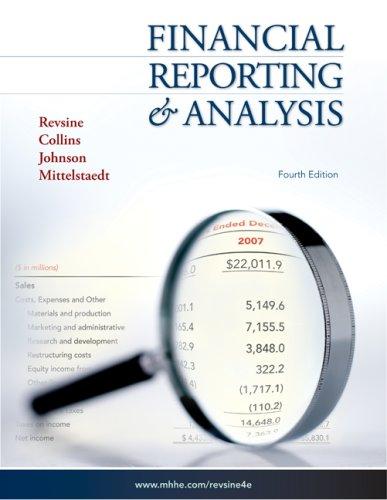The following notes are excerpted from the financial statements of three companies: Ricoh Company Ltd., March 31,
Question:
Ricoh Company Ltd., March 31, Year 2
Note No. 7—Short-term Borrowings and Trade Notes Receivable Discounted with Banks
The Company and certain of its domestic subsidiaries regularly discount trade notes receivable on a full recourse basis with banks. These trade notes receivable discounted are contingent liabilities. The weighted average interest rates on these trade notes receivable discounted were 4.2% and 3.2% as of March 31, Year 1 and Year 2, respectively.
Crown Crafts Inc., March 31, Year 2
Note No. 4—Financing Arrangements
Factoring Agreement The Company assigns substantially all of its trade accounts receivable to a commercial factor. Under the terms of the factoring agreement, the factor remits invoiced amounts to the Company on the approximate due dates of the factored invoices. The Company does not borrow funds from its factor or take advances against its factored receivables balances. Accounts are factored without recourse as to credit losses but with recourse as to returns, allowances, disputes, and discounts. Factoring fees included in marketing and administrative expenses in the consolidated statements of earnings were $1,501,000 (Year 2), $1,223,000 (Year 1), and $1,077,000 (Year 0).
Foxmeyer Corporation, March 31, Year 2
Note C—Accounts Receivable Financing
On October 29, Year 1, the Corporation entered into a one-year agreement to sell a percentage ownership interest in a defined pool of the Corporation’s trade accounts receivable with limited recourse. Proceeds of $125.0 million from the sale were used to reduce amounts outstanding under the Corporation’s revolving credit facilities. Generally, an undivided interest in new accounts receivable will be sold daily as existing accounts receivable are collected to maintain the participation interest at $125.0 million. Such accounts receivable sold are not included in the accompanying consolidated balance sheet at March 31, Year 2. An allowance for doubtful accounts has been retained on the participation interest sold based on estimates of the Corporation’s risk of credit loss from its obligation under the recourse provisions. The cost of the accounts receivable financing program is based on a 30-day commercial paper rate plus certain fees. The total cost of the program in Year 2 was $2.2 million and was charged against Other income in the accompanying consolidated statements of income. Under the agreement, the Corporation also acts as agent for the purchaser by performing recordkeeping and collection functions on the participation interest sold. The agreement contains certain covenants regarding the quality of the accounts receivable portfolio, as well as other covenants which are substantially identical to those contained in the Corporation’s credit facilities.
Required:
How do the three companies record the transfer of their receivables—that is, as a sale or borrowing? Is their accounting treatment consistent with the economics of the transactions? Explain.
Contingent liabilities
A contingent liability is an obligation of business related to an uncertain future event. The business must record it in its financial statements if the amount can be reliably estimated and it is probable that amount will be paid by business as a... Financial Statements
Financial statements are the standardized formats to present the financial information related to a business or an organization for its users. Financial statements contain the historical information as well as current period’s financial... Accounts Receivable
Accounts receivables are debts owed to your company, usually from sales on credit. Accounts receivable is business asset, the sum of the money owed to you by customers who haven’t paid.The standard procedure in business-to-business sales is that... Balance Sheet
Balance sheet is a statement of the financial position of a business that list all the assets, liabilities, and owner’s equity and shareholder’s equity at a particular point of time. A balance sheet is also called as a “statement of financial... Corporation
A Corporation is a legal form of business that is separate from its owner. In other words, a corporation is a business or organization formed by a group of people, and its right and liabilities separate from those of the individuals involved. It may...
Fantastic news! We've Found the answer you've been seeking!
Step by Step Answer:
Related Book For 

Question Posted:





